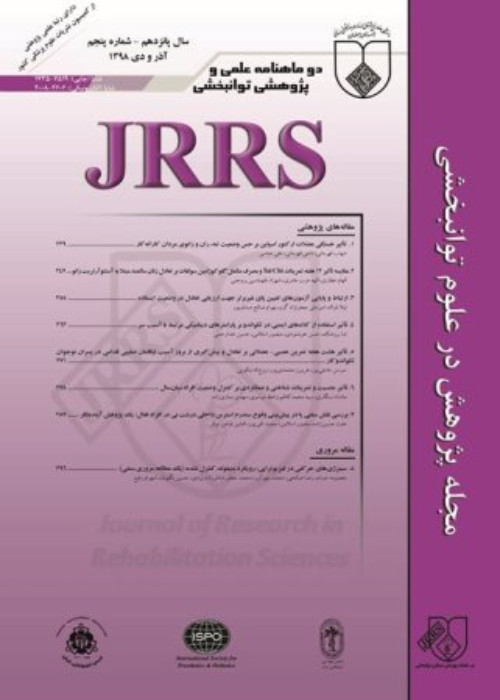Inter Tester and Intra Tester Reliability of Eight Sacroiliac Joint Static and Dynamic and Three Pain Provocation Tests
Author(s):
Abstract:
Introduction
The purpose of this study was to determine the inter tester and intra tester reliability of 5 static and 3 dynamic palpation tests, and three pain provocation tests used to diagnose sacroiliac joint dysfunction.Method
Five static palpation tests, namely palpation and assessment of the levels of the 1) posterior superior iliac spine (PSIS) in standing position, 2) PSIS in sitting position, 3) anterior superior iliac spine (ASIS) in standing position, 4) Medial Maleolus (MM) in supine position, and 5) MM in long sitting position, and three dynamic (motion palpation) tests, 1) the Gillet test, 2) the standing flexion test, and 3) the sitting flexion test were performed on ten asymptomatic subjects by four examiners. Each test was performed four times by each examiner resulting in 1280 assessments in total. Pain provocation tests were posterior pelvic pain provocation test (PPPPT) or posterior shear test, patric test, and hip resisted abduction test. The Study included twenty women with chronic low back pain, aged between 20 to 30 years. Each of pain provocation tests were performed two times by two examiners.Results
Reliability was determined using Kappa Statistic which allows assessment of observer agreement for more than two examiners and multiple examiners. Intra examiner agreement of static palpation tests revealed a range of reliability from slight to good. Kappa coefficient yielded intra examiner agreement that ranged between slight to good for the PSIS in standing position (0.18-0.75), slight to moderate for the ASIS (0.15-0.5), and slight to fair (0.1-0.35) for other static and all motion palpation tests. Inter examiner reliability of all the static and dynamic tests did not exceed slight reliability (0.0-0.2). Kappa value for intertester reliability of posterior shear test, patric test, and hip resisted abduction test for right limb was 0.7, 0.7, and 0.6, and for left one was 0.7, 0.78, 0.34, respectively, and the mean value of kappa for intratester reliability was between 0.75 and 0.91. Conclusions
The results of this study suggest that the reliability of palpation and assessment of the levels of the PSIS, ASIS, and MM in static positions, and the gillet, standing flexion, and sitting flexion tests as indicators of sacroiliac joint dysfunction still remain questionable. Therapists should reconsider the usefulness of evaluation techniques that rely on the assessment of the anatomical symmetry of bony landmarks of the innominates in static and dynamic conditions. About pain provocation tests, the results showed that posterior shear and hip resisted abduction tests are reliable tests to diagnose the pathology in the sacroiliac joints. The reliability of patric test that commonly used to determine the sacroiliac joints pathologies is in under questionLanguage:
Persian
Published:
Journal of Research in Rehabilitation Sciences, Volume:3 Issue: 1, 2007
Page:
17
magiran.com/p737226
دانلود و مطالعه متن این مقاله با یکی از روشهای زیر امکان پذیر است:
اشتراک شخصی
با عضویت و پرداخت آنلاین حق اشتراک یکساله به مبلغ 1,390,000ريال میتوانید 70 عنوان مطلب دانلود کنید!
اشتراک سازمانی
به کتابخانه دانشگاه یا محل کار خود پیشنهاد کنید تا اشتراک سازمانی این پایگاه را برای دسترسی نامحدود همه کاربران به متن مطالب تهیه نمایند!
توجه!
- حق عضویت دریافتی صرف حمایت از نشریات عضو و نگهداری، تکمیل و توسعه مگیران میشود.
- پرداخت حق اشتراک و دانلود مقالات اجازه بازنشر آن در سایر رسانههای چاپی و دیجیتال را به کاربر نمیدهد.
In order to view content subscription is required
Personal subscription
Subscribe magiran.com for 70 € euros via PayPal and download 70 articles during a year.
Organization subscription
Please contact us to subscribe your university or library for unlimited access!


